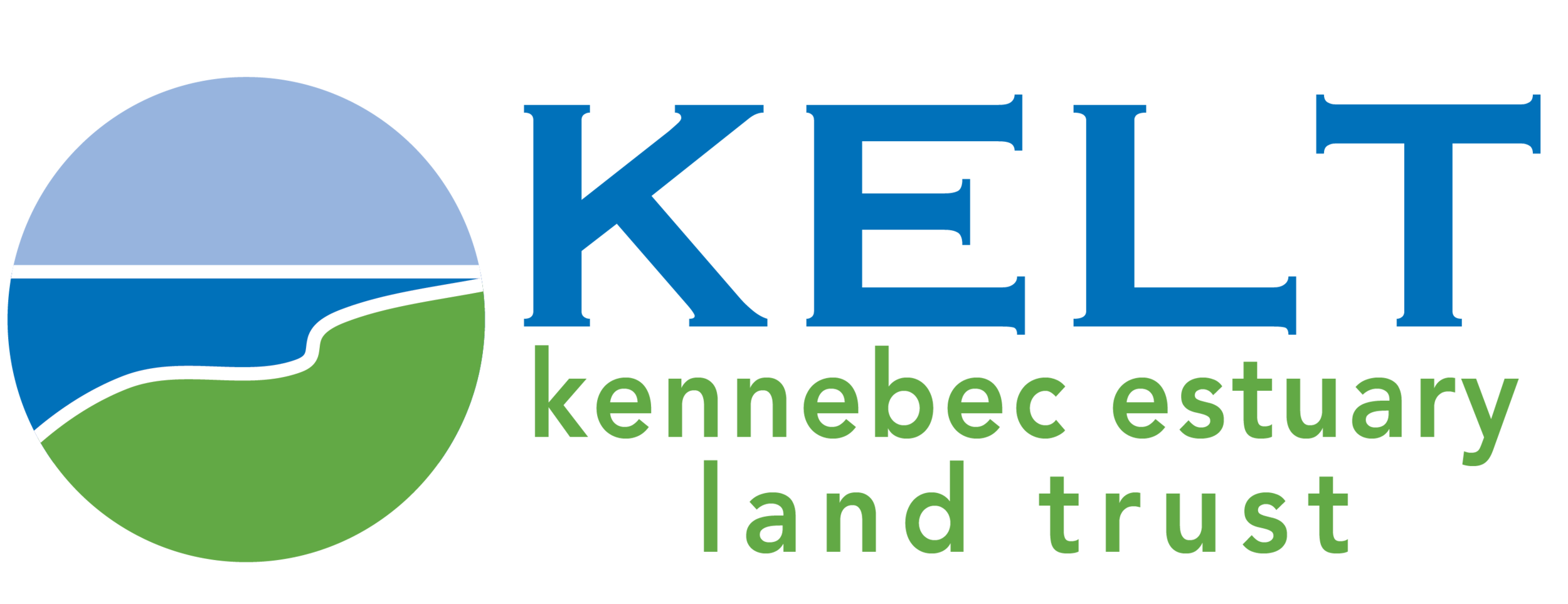In the Field with Emma: Building Bridges at Green Point
Last week’s Wednesday Workday took a few staff members out to Green Point Preserve in West Bath to put in a bridge.
I arrived in the organization’s charismatic stewardship truck with Dillon Mulhern, KELT’s Stewardship Coordinator, and was met by Land and Stewardship Director, Tenley Wurglitz, with an exciting discovery: an adolescent native honeysuckle with one pair of tiny red berries hidden beneath its cheerful spring-green leaves. While the midcoast is replete with invasive honeysuckles that grow along roadways and spill out from garden hedges, the native American honeysuckle is a far less common find.
Lonicera canadensis, one of Maine's native honeysuckles. Image by Rob Routledge.
The species thrives in woodlands and edge areas; its oval-shaped red berries provide a food source for numerous native birds. Tenley’s infectious joy at seeing this spindly green creature reminded me of the power of getting out into the natural places all around us. The bridge we were going to build today? I was beginning to recognize that it was not just a bridge connecting two sections of piney trail, but a bridge connecting people and place, humans and nature.
A small but dedicated cohort of local KELT enthusiasts had responded to the request for volunteers, and the day started with much bug-spraying and sunscreening before we loaded up sleds and bags and shoulders with cedar decking, power tools, shovels, and work gloves for the trek in to the bridge site. The proposed two-stringer bridge was to cover a muddy area perhaps three quarters of a mile down the winding trail of the preserve.
Volunteer Jeff Benton and Emma dig trenches to hold the footers of the trail bridge.
The gear was a bit unwieldy, but as one member of the party aptly put it, the sharp smell of the cedar boards kept us all going. We stopped several times along the way, Tenley inviting us to admire some regal red pines presiding over the trail, investigate the bright orange roots of goldthread poking through the pine duff, and pick out the hermit thrush’s flute-like call from the tapestry of birdsong that filled the forest. A volunteer piped up to identify an insistent oven-bird and a black-throated blue warbler. Eventually, we laid down our burdens beside the trail at our site, and split up to tackle the project from different angles.
My job was to dig a small trench into which the footers of the bridge would go, deep enough to stabilize the bridge without getting swallowed up by the loose soil. The miracle of decomposition revealed itself as I dug through several inches of rich, reddish soil chock full of crawling critters before hitting the thick clay beneath. We found remnants of an old corduroy bridge thrown together from small branches, dug up thickets of interconnected roots, and parsed through clumps of white fibers, evidence of the mycorrhizal network facilitating communication amongst the silent inhabitants of the forest all around us.
“The gear was a bit unwieldy, but as one member of the party aptly put it, the sharp smell of the cedar boards kept us all going.”
Volunteer Jeff Benton pounds a silver spike into the bridge as the structure starts to come together.
When the footers were in and the supporting beams arranged correctly on top of them, we each took a turn pounding long silver spikes into the wood to cement the bridge’s structure. There was much cheering as each person took their last few swings and the bridge became more and more connected, more and more stable.
By midday, we had a completed bridge of fresh, sweet-smelling cedar. Our first hiker wandered along the trail to test it out and pronounced it well done. Sweaty, bug-bitten, and pleased with our work, we meandered back towards the trailhead. Along the way, a volunteer pointed out a white yarrow flower framed in a shaft of sunlight, stretching eagerly into the pathway. Its earnest push towards the sun struck me as perhaps representative of our task that day - hard work spurred on by the warm, hopeful purpose of growing and stewarding Maine’s network of preserved natural areas.
Green Point Preserve’s completed cedar walkway in dappled sunlight!




